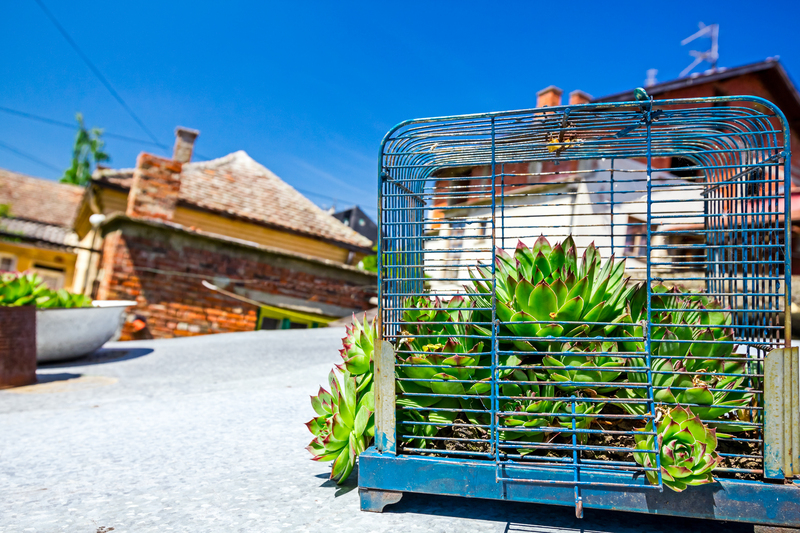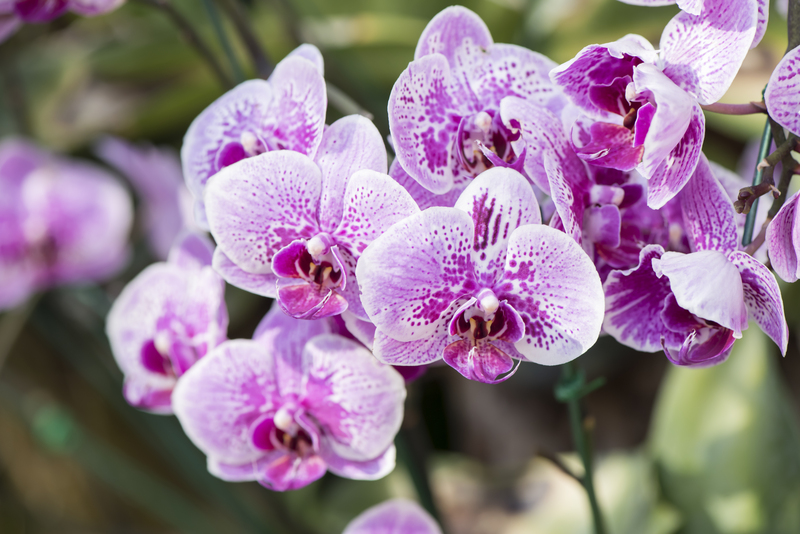Unlocking the Secrets to a Lush Green Lawn for Beginners
Imagine stepping barefoot onto a vibrant, soft lawn--a touch of luxury just outside your door. Achieving a lush green lawn may seem reserved for gardening pros, but with the right techniques and understanding, beginners can enjoy a verdant oasis, too. This comprehensive guide reveals the secrets to cultivating healthy grass, demystifies lawn maintenance, and empowers newcomers to create lawns that leave neighbors green with envy.

Understanding What Makes Lawns Truly Green
Before embarking on your lawn care journey, it's vital to understand what makes a lawn healthy and green:
- Soil Quality: Nutrient-rich, well-textured soil lays the foundation for strong grass growth.
- Grass Selection: The right grass variety for your climate influences color, density, and health.
- Sunlight and Water: Balanced exposure to sun and water keeps grass thriving.
- Lawn Care Practices: Proper mowing, feeding, and maintenance support vibrant, green turf.
Let's explore each of these elements step by step to unlock a lawn's full potential.
Choosing the Right Grass for Your Location
Selecting the optimal grass species is perhaps the most crucial step in unlocking the secrets to a green, healthy lawn for beginners. Grass types generally fall into two categories:
- Cool-Season Grasses (e.g., Kentucky Bluegrass, Ryegrass, Fescue): Thrive in northern climates and withstand cool temperatures.
- Warm-Season Grasses (e.g., Bermuda, Zoysia, St. Augustine): Ideal for southern regions, flourishing in heat and humidity.
Tips for selecting lawn grass:
- Research your area's climate zone using a gardening map.
- Consult with local garden centers for grass recommendations.
- Factor in sunlight, as some grasses need full sun while others tolerate shade.
Soil Preparation: The Key to Lush Lawns
Testing Your Soil
Healthy lawns start with quality soil. Purchase a soil test kit or send a sample to a local extension office for analysis. Key items to assess:
- pH level: Most grasses prefer a slightly acidic to neutral pH (6.0-7.0).
- Nutrient content: Check for necessary elements such as nitrogen, phosphorus, and potassium.
- Texture and drainage: Good soil is loose, not compacted, draining well, and aerated.
Improving Your Soil Before Planting
- If your soil is too acidic, add lime; if alkaline, apply sulfur--ask a professional for proportions.
- Mix in compost or aged manure to boost organic matter and nutrients.
- Remove rocks, roots, and debris from the area.
- Rake and level the soil to ensure an even planting surface.
Taking proper care with soil preparation gives your new lawn the best possible start.
Seeding or Sodding: Planting Your New Lawn
Seeding Lawns
Seeding is often more affordable and offers a wider variety of grasses but requires patience. Here's how beginners can succeed at seeding:
- Timing: Early fall (cool-season grasses) or late spring (warm-season grasses) yields best results.
- Spread seeds evenly using a broadcast spreader for uniformity.
- Lightly rake to cover seeds with 1/8 inch of soil--the proper soil-to-seed contact is crucial.
- Water gently daily until sprouts emerge, keeping the topsoil consistently moist.
Sodding Lawns
Sod provides an "instant lawn," perfect for impatient beginners.
- Lay strips tightly: Stagger edges in brickwork fashion to avoid gaps.
- Roll sod: Use a roller to eliminate air pockets and promote root contact with soil.
- Water immediately: Sod needs deep watering the first two weeks to establish roots.
In both methods, avoid heavy foot traffic until the grass establishes.
Watering Your Lawn Like a Pro
Consistent and correct watering is vital for that lush green look. Here are the watering secrets every beginner should know:
- Deep, infrequent watering encourages deeper root growth and drought resistance.
- Morning is best: Water early for minimal evaporation and reduced disease risk.
- Most lawns need 1-1.5 inches of water per week from rainfall or sprinklers.
- Use a rain gauge or tuna can to measure irrigation output accurately.
- Avoid overwatering: Waterlogged lawns invite fungus and shallow root systems.
Mowing Techniques for a Healthier, Greener Lawn
Beginners often overlook that mowing is more than just cutting grass--it directly impacts how green and lush your lawn appears.
- Never remove more than one-third of the blade height per mow. Cutting too short stresses grass, turning it brown.
- Keep mower blades sharp for clean cuts--dull blades tear and weaken grass.
- Alter mowing patterns each session to encourage upright growth and avoid ruts.
- Leave clippings ("grasscycling"): They recycle nutrients and moisture back into the soil.
Adjust the Height to Grass Type
- Cool-Season Grasses: 2.5-4 inches
- Warm-Season Grasses: 1-2.5 inches
Longer mowing heights provide shade for roots and encourage emerald-green color.
Fertilizing for Vibrancy and Health
Fertilizing is one of the essential secrets to unlocking a green, healthy lawn for beginners. Here's how to do it right:
- Base fertilization needs on soil test results to avoid over or underfeeding.
- Apply a slow-release nitrogen fertilizer in early spring and late fall (for cool-season); mid-to-late spring and late summer (for warm-season).
- Wipe up stray fertilizer: Avoid feeding sidewalks and driveways to prevent runoff and pollution.
- Water after application to activate fertilizer and prevent leaf burn.
- Never over-fertilize! It can burn or kill grass--more is not better.
Combatting Weeds, Pests, and Diseases
Weeds, lawn pests, and grass diseases threaten even the greenest of lawns. The secret for beginners is proactive prevention:
Controlling Weeds
- Thick, healthy lawns crowd out weeds naturally.
- Hand-pull weeds or use a specialized weeder for spot treatments.
- Apply pre-emergent herbicide in early spring to stop weed seeds before they germinate.
- Limit broad-spectrum herbicides, as they may harm desirable grass.
Dealing with Lawn Pests
- Grubs: Look for brown patches and loose turf; treat with beneficial nematodes or grub control products.
- Chinch bugs, armyworms: Prompt treatments with insecticides or natural predators restore your lush green grass.
Lawn Disease Management
- Prevent disease by watering in the early morning and avoiding excess moisture at night.
- Remove and discard dead, diseased grass clippings.
- Use disease-resistant grass varieties whenever possible.
Secrets to Year-Round Lawn Care Success
A truly green, healthy lawn evolves with the seasons. Here's a basic seasonal lawn care calendar for beginners:
Spring
- Dethatch and aerate compacted lawns to improve air and water penetration.
- Fertilize and overseed bare patches for thick, even growth.
- Apply pre-emergent weed control as early as possible.
Summer
- Increase mowing height to shade roots against heat stress.
- Monitor watering closely, adjusting for drought or heavy rainfall.
- Watch for pests and treat if necessary.
Fall
- Fertilize to encourage root growth before winter.
- Overseed thin areas for a denser lawn next year.
- Collect leaves and avoid suffocation of grass by debris.
Winter
- Minimize foot traffic on dormant or frosty lawns.
- Service equipment in preparation for spring.
Common Lawn Care Mistakes Beginners Should Avoid
Learning what not to do can be just as valuable as proper technique. Here are common pitfalls in the pursuit of a lush green lawn:
- Cutting grass too short ("scalping"), which weakens plants and invites weeds.
- Overwatering or underwatering, both of which stress your lawn.
- Skipping soil tests and guessing at fertilization needs.
- Ignoring signs of pests or lawn disease until it's too late.
- Using the wrong grass type for your regional climate.
Essential Tools and Products for Beginners
- Quality lawn mower with adjustable height and sharp blades
- Broadcast or drop spreader for seeds and fertilizers
- Hose and sprinkler or irrigation system
- Hand tools: Rake, hand weeder, and pruners
- Soil test kit
Investing in the right tools makes all lawn care tasks easier, faster, and more effective.

Frequently Asked Questions on Starting a Green Lawn
- How often should I water my new lawn? Daily for seeds or new sod until established, then transition to deep weekly watering.
- When is the best time to fertilize? Early spring and fall for cool-season grasses; late spring and late summer for warm-season grasses.
- What's the fastest way to get a green lawn? Sod provides instant results; proper soil preparation and fertilization speed up seeding success.
- Should I bag or mulch my clippings? Leave clippings on the lawn to return nutrients, unless the grass is diseased or too tall.
Conclusion: Growing a Healthy, Green Lawn is Achievable for Beginners
Unlocking the secrets to a lush green lawn isn't mystical--it's about understanding and meeting your grass's basic needs. Start with quality soil, choose the right grass variety, and commit to a consistent lawn care schedule. Water, mow, and fertilize wisely, and always remain vigilant against weeds and pests.
With patience and the techniques explored above, even beginners can transform patchy, dull turf into a verdant masterpiece. So roll up those sleeves--your healthy, vibrant, green lawn awaits!